Spathiphyllum, care for which has its own nuances, is an evergreen plant from a tropical and subtropical climate. An unusual flower from the Aroid family, also known as “female happiness,” came to Europe back in the 19th century. Thanks to its inflorescences-cobs wrapped in a white veil, which stand out against the background of a root bunch of leaves, the plant captivated Europeans, who today are happy to breed spathiphyllum at home.
Material Content:
Species and varieties
In nature, the genus has about 40 species, some of which have long been grown as potted crops. In addition to the main species, the fruitful work of breeders gave gardeners many additional forms and varieties that differ in size, color of leaves and other parameters.
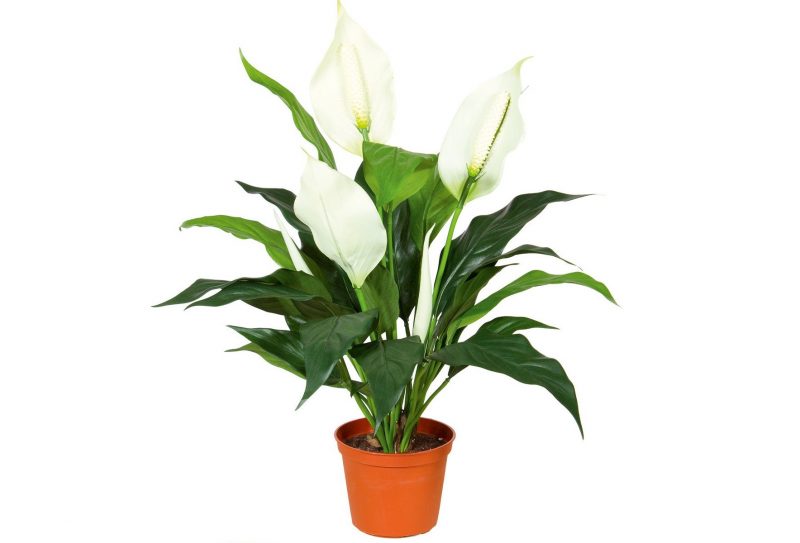
The most interesting of them:
- Wallis spathiphyllum is a short bush up to 30 cm tall from South America with graceful green leaves. With prolonged flowering, short white cobs and large veils of the same color are observed.
- Spathiphyllum Chopin is a tall plant up to 1 m in height, the hallmark of which is the ability to bloom twice a year.
- Spathiphyllum Domino is a variety derived from the Wallis spathiphyllum, distinguished by the colorful coloring of leaf plates.
- Spathiphyllum Alan is a plant that does not exceed half a meter in height, with upright leafy plates of a contrasting green color. As with other representatives of the genus, the white veil around the inflorescence acquires a greenish tint by the end of flowering.
- Spathiphyllum Sensation is a large variety of Dutch selection, the height of which varies within 1.5 m. Ribbed leaves of dark green color often adorn large rooms with dim lighting.
- Heliconcelian Spathiphyllum - a native of Brazil, reaching a meter height. Glossy pointed leaves have wavy edges and are painted in dark green. The bedspread is twice as large as the inflorescence itself.
Spathiphyllum: the nuances of growing
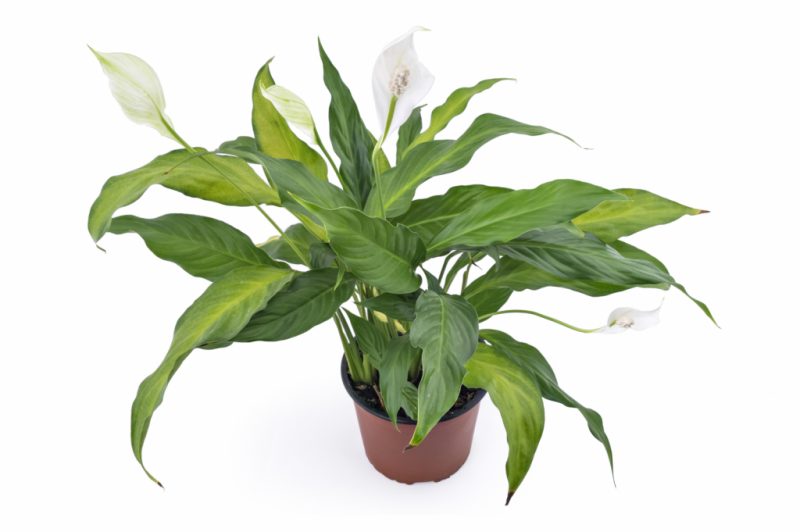
The popular perennial has its own peculiarities of structure and development, which should be taken into account when growing:
- The root system is quite short.
- The stem is absent.
- Leaf plates develop in a bundle directly from the root and have an oval or lanceolate shape with pronounced veins.
- The flower is represented by an inflorescence-cob wrapped in a white veil, which over time acquires a shade of green.
- Flowering occurs in the spring and lasts up to a month. Subject to all agrotechnical requirements, a second flowering is possible for the season.
Home Care
Despite the tropical origin, an elegant flower with graceful inflorescences is very easy to care for if you know the optimal conditions of detention.
Location and lighting
Shade-tolerant spathiphyllum is best placed near the northeast windowswhere the plant will receive a sufficient amount of bright light for continuous flowering. With a constant shortage of light, the flowering phase may not only decrease, but may not occur at all.
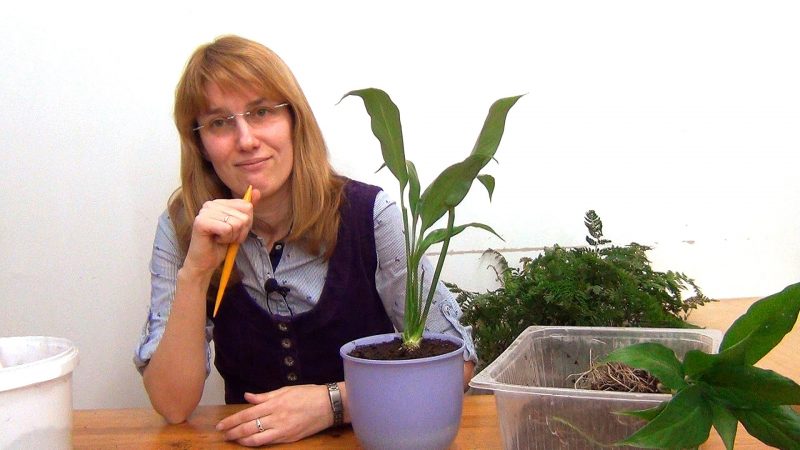
When placing the inhabitant of the lower tiers of the tropical forest near the southern windows, you should shade the flower from the direct sun with the help of curtains or place it in the back of the room.
Temperature and humidity
The temperature of spathiphyllum has no special requirements, developing well at 22-24 ° C.
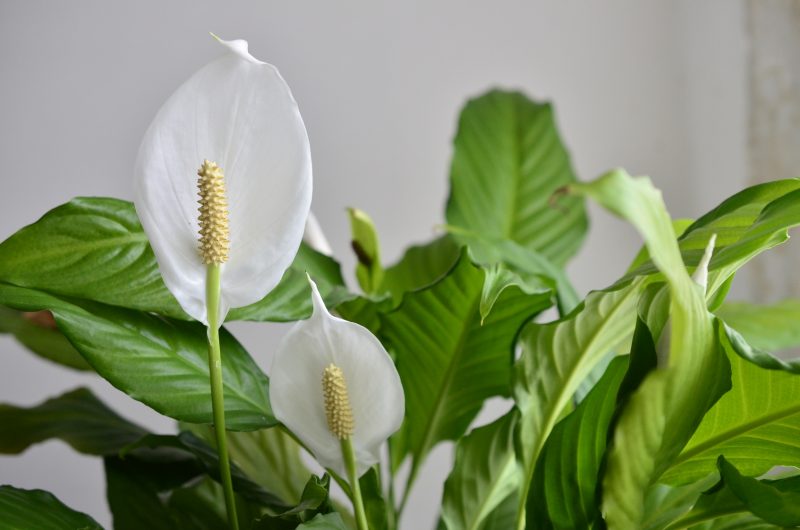
The maximum permissible values for it are:
- 15 ° C for winter time;
- 32 ° C for the summer.
Exotic flower does not tolerate drafts and sharply reacts to dry air.
Ensuring high humidity is one of the key requirements for the content of spathiphyllum in the apartment.
Advice! To ensure prolonged flowering, it is worth maintaining the temperature regime within 18 ° C.
Spathiphyllum - watering and spraying
In the natural environment, spathiphyllum is most often found in marshy areas or near water bodies, which is why soil and air moisture are so important to it.
Read also: how to care for a flower female happiness so that it blooms
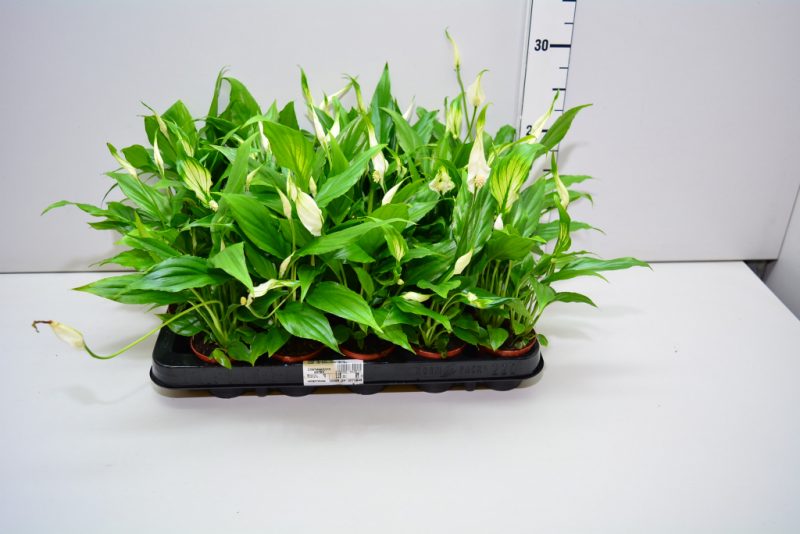
During the period of active growth, the plant is watered abundantly, but in such a way that between the procedures the top layer of the substrate has time to dry. In winter, when dormant, watering is reduced, but it is impossible to prevent the earthen coma from drying out.
To ensure the required humidity level:
- during the growing season, the plant is sprayed twice a day;
- in the stage of stagnation (October – January), a container with wet moss or expanded clay is installed near the spathiphyllum.
The soil mixture necessary for Women's happiness
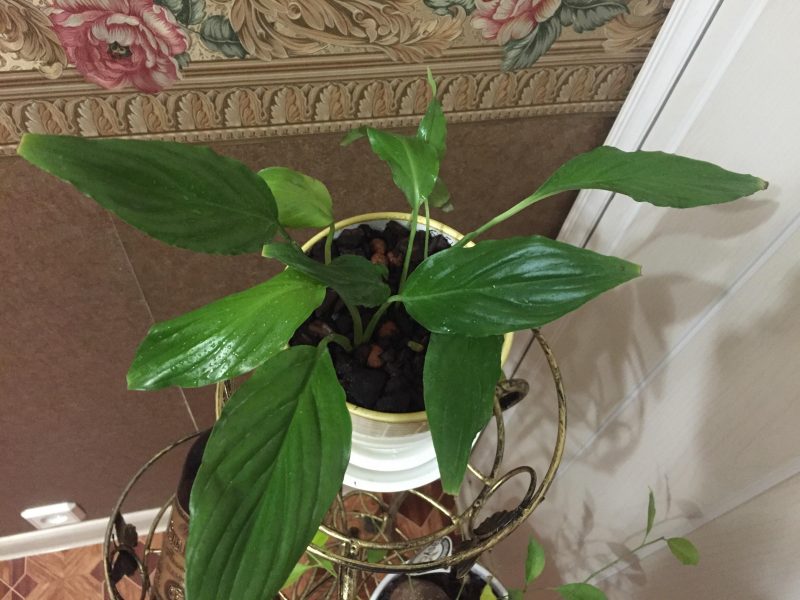
For full growth, a flower needs a light, close to natural, soil with a loose structure. You can prepare the soil mixture suitable for indoor spathiphyllum by mixing peat, garden soil, sand and compost in a ratio of 2: 1: 1: 1.
Important! Providing lightness and friability of the soil, the grower will protect the flower from stagnation of water and the development of rot on the roots.
Top dressing
During active growth (in the spring – summer period), the plant needs to be fed with complex mineral fertilizers twice a month. In other phases of development, it is enough to enrich the soil monthly.
Transfer
Young specimens are transplanted every spring.And plants that have reached the age of five are subject to transplantation only after the emergence of roots from the drainage holes.
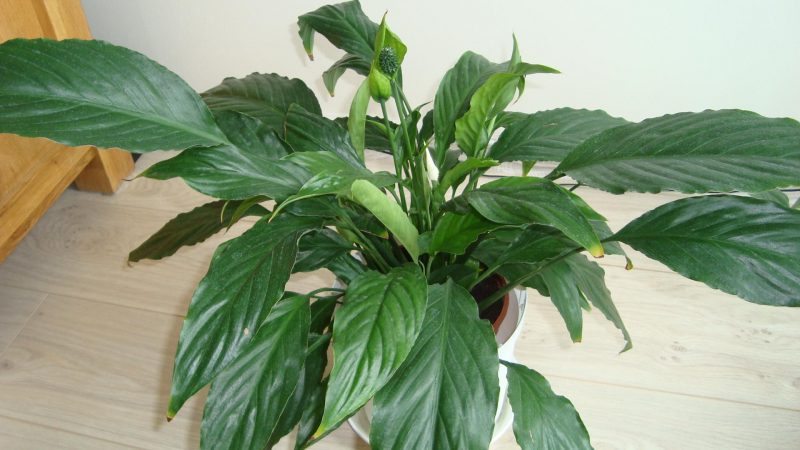
To grow a large plant and minimize its stress from the procedure, you should adhere to the following scheme:
- A narrow and shallow container is prepared, at the bottom of which a expanded clay drainage is placed.
- Spathiphyllum in an old pot is abundantly watered and removed after drying.
- All lateral processes are separated so that the maternal specimen does not waste strength on their development.
- The drainage layer in a new pot is sprinkled with a special substrate on which a flower with an earthen lump is placed.
- The voids are filled with soil mixture, after which it is slightly moistened.
Attention! The first full watering after transplantation is carried out only for 4 days.
Pest and Disease Control
Spathiphyllum is exposed to pests and disease only in case of violation of the rules for care.

- Spider mites and aphids are pests that attack a flower in low humidity. If you systematically spray the plant or wipe the leaves with a damp sponge, then these harmful insects will not annoy the culture. In the case when the pest has already populated the flower, the plant should be sprayed with an insecticide, after protecting the substrate from the solution.
- Gray rot is a fungal disease that develops intensively with stagnation of moisture in the roots or the content of the flower at too low temperatures. To save the affected specimen, it is necessary to remove it from the old substrate, remove the affected parts of the rhizome and transplant the spathiphyllum into a fresh soil mixture.
Spathiphyllum: reproduction
Perennial from the tropical flora easily propagates vegetatively. Reproduction by seeds is also possible, but it is a very time-consuming and unproductive process.
Bush division
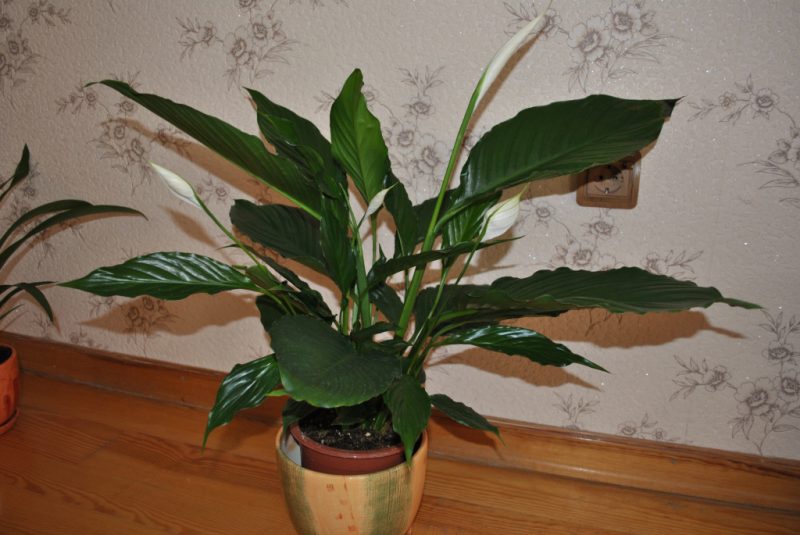
The procedure is carried out during a transplant in spring as follows:
- The baby is separated with a sharp, sterile instrument from the maternal specimen.
- Places of cuts are sprinkled with charcoal.
- Separated offsprings are seated in individual pots with loose soil, where they are looked after as if they were adult specimens.
Seeds
Experienced gardeners who are not afraid of difficulties can try to propagate the flower in a similar way, adhering to the following steps:
- A container for seedlings is prepared, which is filled with a light, moistened substrate.
- Freshly picked seeds are distributed over it.
- Crops are kept under a film, which is systematically removed for airing and moistening the soil.
- When the shoots appear, the film is removed.
- Diving seedlings in individual pots is carried out after they get stronger.
Possible problems with growing spathiphyllum
Growing spathiphyllum can be accompanied by the occurrence of problem situations.
Feminine happiness: leaves turn yellow and blacken

When the leaves of spathiphyllum turn yellow, it is worth paying attention to the irrigation system. This is a sign of soil moisture deficiency. In case of excessive watering, the leaves begin to blacken, demonstrating the onset of the development of a fungal disease in the form of root rot.
Why does the flower Feminine happiness wilt?
The reasons for this difficulty may lie in the following:
- Temperature. Too high temperature, lasting for a long period of time.
- Humidity. It is necessary to systematically refresh the flower by spraying to avoid problems associated with dry air (leaf withering and gradual drying, starting from the tips).
- Pests - when eating a spider mite with leaf juice, their wilting and further drying are noted.
Signs and superstitions associated with spathiphyllum
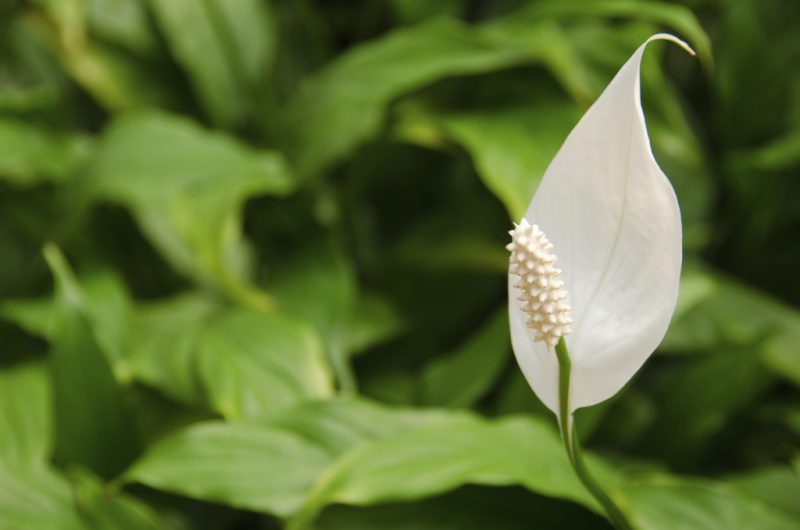
The people of the tropics are credited with absolutely opposite qualities. If you believe one sign, then spathiphyllum is simply necessary in the bedroom of a young girl - he will attract a beautiful chosen one.However, there is another superstition, whose supporters are convinced that spathiphyllum is a “husband”. But despite the signs, there is a scientifically proven fact: an elegant plant perfectly cleans the air, absorbing various toxins.
So, thanks to its unpretentiousness and shade tolerance, the spathiphyllum flower will become the highlight of the city apartment, creating a small tropical corner in it.












